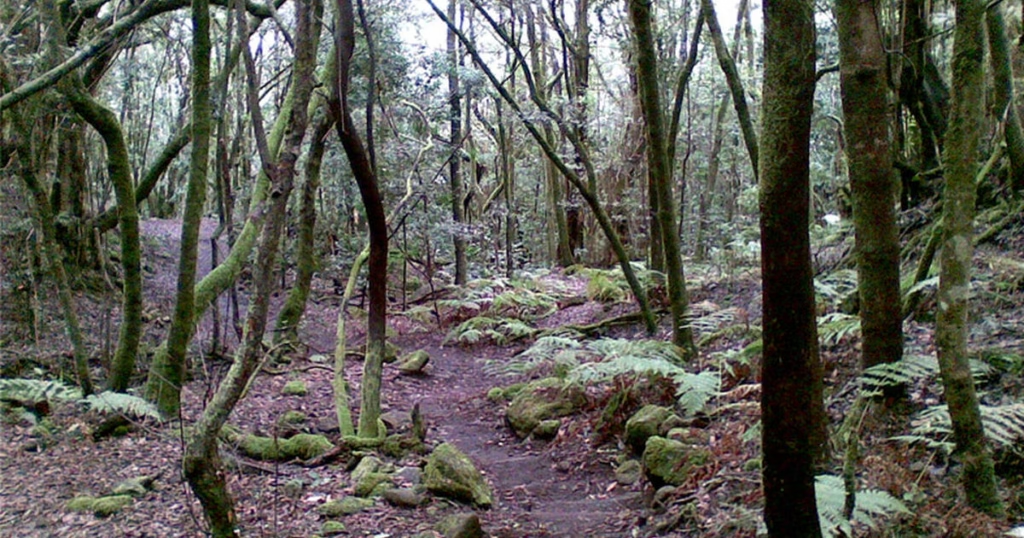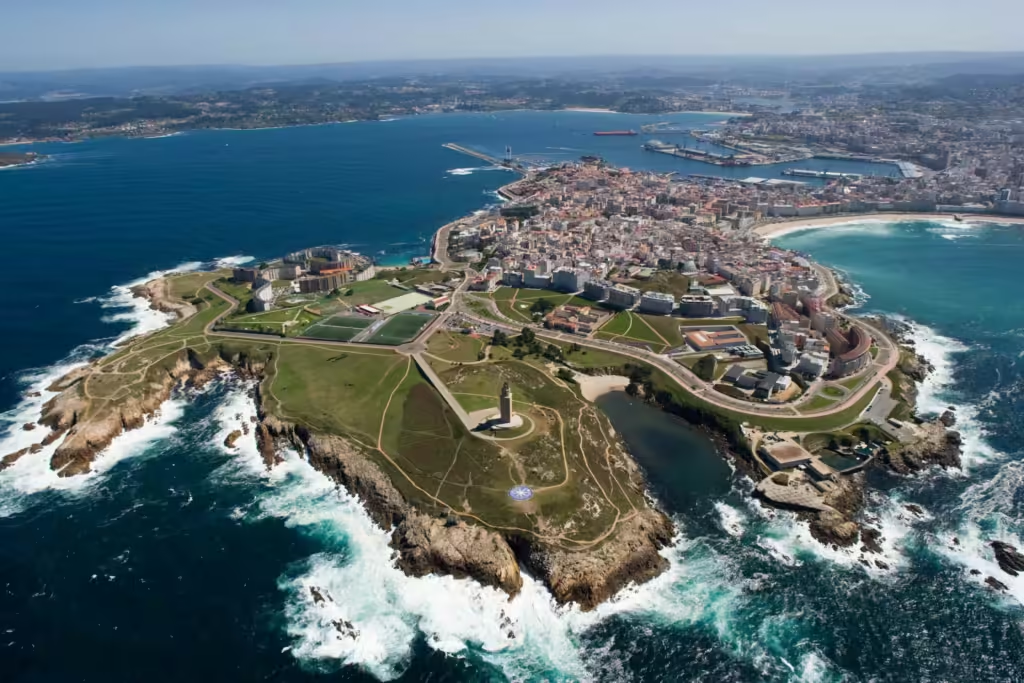Garajonay National Park is a mesmerizing natural paradise situated on the island of La Gomera in Spain’s Canary Islands. This unique park features dense laurel forests, misty valleys, and a fascinating ecosystem that has earned it UNESCO World Heritage status. Its high-altitude cloud forests, scenic hiking trails, and rare flora and fauna make it a top destination for nature lovers. Whether you are seeking an unforgettable trekking experience or a peaceful escape, Garajonay offers something for every traveler.

What Makes Garajonay National Park Unique?
Garajonay National Park stands out as one of the most significant laurel forest reserves in the world. These ancient woodlands covered much of Southern Europe millions of years ago, thriving under the region’s subtropical climate. However, climate shifts caused these forests to disappear from most continental locations. Luckily, the Canary Islands’ mild temperatures and high humidity preserved these primeval woodlands in La Gomera.
The park occupies over 40 square kilometers of the island and protects fragile habitats that are vital to local biodiversity. It was designated a UNESCO World Heritage Site in 1986, showcasing its global ecological importance. Inside the park, mist-laden trails weave through thick canopies of laurel trees, where mosses and lichens adorn trunks and branches. This timeless environment creates an otherworldly landscape that enchants visitors from around the globe.
Best Times to Visit Garajonay National Park
La Gomera enjoys mild weather throughout the year, but the park’s climate can vary according to altitude. The higher zones experience cloudier conditions, especially in the morning. If you want to avoid heavy fog, plan your hikes during late morning or early afternoon. This timing often reveals sun-dappled clearings, making the laurel forests especially photogenic.
Spring (March to May): This season sees comfortable temperatures and fewer crowds. Wildflowers begin to bloom, adding color to the park’s trails.
Summer (June to August): Days are longer, allowing more time for exploration. However, coastal areas can be warmer, prompting some visitors to seek refuge in the cooler forest interiors.
Autumn (September to November): Expect moderate temperatures and occasional rainfall. Trails tend to be less crowded, providing a peaceful hiking experience.
Winter (December to February): The park remains green and vibrant. Occasional rainfall adds to the misty ambiance in the forests, creating a fairytale-like atmosphere.
Top Attractions in Garajonay National Park
1. Alto de Garajonay
Alto de Garajonay is the highest peak on La Gomera, standing at approximately 1,487 meters above sea level. It is known for its breathtaking panoramas of neighboring islands such as Tenerife, El Hierro, and La Palma. On clear days, you can even spot the distinct silhouette of Mount Teide on Tenerife.
2. Laguna Grande
Laguna Grande is a favorite among visitors looking for a tranquil picnic spot. This area features a charming recreation zone with tables and benches under tall trees. Traditional folklore says this open area was once a ritual site for ancient inhabitants of La Gomera. Today, it offers a serene environment suitable for families.
3. Las Creces Forest
Las Creces showcases the rich biodiversity of Garajonay. Its popular walking route winds through mossy laurel trees and giant ferns, giving hikers a taste of the park’s signature cloud forest. In this humid enclave, moisture drips from leaves, and birds sing from hidden perches. Photographers flock here for the atmospheric shots of twisted trunks and ethereal greenery.
4. El Cedro Valley
El Cedro is one of the park’s most iconic locations. It boasts the largest laurel forest on the island and features a picturesque stream that flows year-round. Here, nature lovers can bask in the sound of running water while exploring footpaths meandering through dense undergrowth. Its proximity to the Hermitage of Nuestra Señora de Lourdes adds cultural value to the landscape.
Outdoor Activities and Hiking Trails in Garajonay
Hiking and Trekking
Garajonay National Park offers a well-maintained network of trails suitable for hikers of all levels. Walks range from easy strolls of less than an hour to more challenging treks that can occupy a full day. Some recommended routes include:
Circular Trail from Alto de Garajonay: This loop allows you to ascend the park’s highest peak and loop back through enchanting laurel forests.
El Cedro Trail: Experience the largest laurel forest in the park as you follow a gentle path that intersects with a flowing stream.
Las Creces Circular Route: Enjoy moderate terrain with captivating forest views. This trail presents an excellent introduction to Garajonay’s biodiversity.
Birdwatching
Birdwatchers will find plenty to love in Garajonay. Many endemic Canary bird species make their home in this area, including the Laurel Pigeon and Bolle’s Pigeon. The park’s cool, damp conditions allow these birds to thrive. You may also spot various species of finches, owls, and falcons. Bringing binoculars enhances your birdwatching experience.
Nature Photography
The interplay between mist and sunlight in Garajonay produces dramatic visual effects. Photographers will enjoy capturing the thick layers of moss on gnarled trunks. The swirling clouds that envelop the forest add mystery and charm to every shot. Mornings often feature a soft glow, perfect for snapping memorable images.
Flora and Fauna: Exploring Garajonay’s Ancient Laurel Forest
Garajonay’s laurel forest is a vestige of the Tertiary Period. It features evergreen trees, including laurels, heathers, and fayas. A year-round supply of moisture supports an impressive array of mosses and lichens. These hang from branches in thick blankets, giving the forest its signature ethereal appearance.
The park is home to the Laurel Pigeon (Columba junoniae) and Bolle’s Pigeon (Columba bollii), both endemic to the Canary Islands. You might encounter reptiles like the Gomeran lizard in sunnier clearings. Amphibians are scarce, yet the Green Toad occasionally appears in damp areas. Insect life is robust, from colorful butterflies to pollinators like bees and hoverflies.
Where to Stay Near Garajonay National Park
The island of La Gomera has accommodations ranging from quaint rural guesthouses to modern hotels. Many of these lodgings are located near the park boundaries, ensuring easy access for early-morning hikes. Agulo, Hermigua, and Valle Gran Rey are popular areas for travelers seeking proximity to the park’s entrances.
Rural Houses (Casas Rurales): These properties offer an authentic island experience, often featuring traditional architecture and panoramic views. They provide a calm ambiance ideal for relaxing after a day of exploring.
Mid-Range Hotels: Some family-run hotels in La Gomera blend comfort with local charm. Look for lodging that offers amenities such as on-site dining and tour guidance.
Eco-Lodges: If you prioritize sustainability, consider eco-lodges. They minimize environmental impact through solar power usage and organic farming practices.
How to Reach Garajonay National Park
Arriving in La Gomera
Most visitors first land on Tenerife, which has two airports: Tenerife North (Los Rodeos) and Tenerife South (Reina Sofía). Ferries to La Gomera depart from the Port of Los Cristianos in southern Tenerife. A high-speed ferry takes around 50 minutes to reach San Sebastián de La Gomera, the island’s capital.
Getting to the Park
Once in San Sebastián, you can rent a car or use public buses to travel to various access points. Road GM-2 traverses central La Gomera, passing near several park entrances. Driving is often the most convenient option for exploring Garajonay at your own pace. Bus routes also serve some of the park’s key trailheads but may have limited schedules, so plan accordingly.
Practical Travel Tips for Garajonay National Park
Pack Layered Clothing: Temperatures can shift quickly in the cloud forest, so wear layers that are easy to remove or add.
Stay Hydrated: Even though the climate is cool, you can still dehydrate during longer hikes. Carry enough water, especially if you plan challenging routes.
Use a Trail Map: Trail markers are generally clear, but bringing a detailed map ensures you stay on the right path, particularly when foggy conditions reduce visibility.
Respect Wildlife: Avoid feeding animals or disturbing their habitats. Observing from a distance helps preserve these vulnerable ecosystems.
Check Weather Forecasts: Fog and rain can appear unexpectedly. Consult local weather updates and follow safety guidelines.
Consider Hiring a Guide: Knowledgeable guides can share insights about the park’s geology, history, and hidden gems. Guided tours often include educational elements that enhance your visit.
Frequently Asked Questions About Garajonay National Park
1. Is there an entrance fee to Garajonay National Park?
No, Garajonay National Park is free to enter. It is a protected area managed by Spanish conservation authorities, and it is open to the public year-round.
2. Can I camp inside Garajonay National Park?
There is no official camping allowed within the park’s core zones. However, you can find nearby campsites and rural accommodations. Always verify local regulations before setting up a tent in any natural space.
3. How long does it take to explore Garajonay National Park?
A quick visit might last just a few hours, but exploring various trails can take a full day or more. Many hikers choose to spend at least two days to fully appreciate the park’s diverse landscapes.
4. Are there guided tours available?
Yes, several tour operators offer guided hikes and interpretive walks. Guides provide valuable information about the park’s ecology, history, and hidden corners. Organized tours can be especially helpful if you have limited time.
5. What is the highest point in the park?
Alto de Garajonay is the highest point at around 1,487 meters above sea level. This summit offers sweeping views of La Gomera and neighboring islands on clear days.
6. Is Garajonay National Park suitable for families with children?
Yes, many trails are family-friendly. Choose shorter routes, and monitor younger hikers closely in areas with steep slopes or slippery terrain.
7. When is the best time to see the laurel forests at their most vibrant?
Laurel forests remain green throughout the year. Spring and autumn are often favored for moderate temperatures and the presence of seasonal blooms.
Conclusion
Garajonay National Park is a must-visit destination for travelers seeking an immersive nature experience on La Gomera. Its UNESCO World Heritage status underscores the park’s outstanding universal value as a living treasure of ancient laurel forests. Whether you are drawn by lush landscapes, diverse wildlife, or serene hiking trails, Garajonay consistently delivers memorable encounters. The park’s consistent cloud cover creates a magical atmosphere, while its well-developed trails cater to both casual walkers and experienced trekkers.
Plan your itinerary around peak viewpoints like Alto de Garajonay, or explore hidden gems like the El Cedro Valley. Remember to pack appropriate clothing, stay hydrated, and treat the environment with care. By following simple guidelines, you can make your visit safe and eco-friendly. Above all, allow time to marvel at the park’s timeless beauty. Each misty turn or sunlit clearing reveals new wonders, showcasing the resilience and splendor of these primeval forests. Garajonay National Park truly stands out as a nature lover’s paradise and offers a glimpse into a world where ancient forests thrive amid the clouds.

